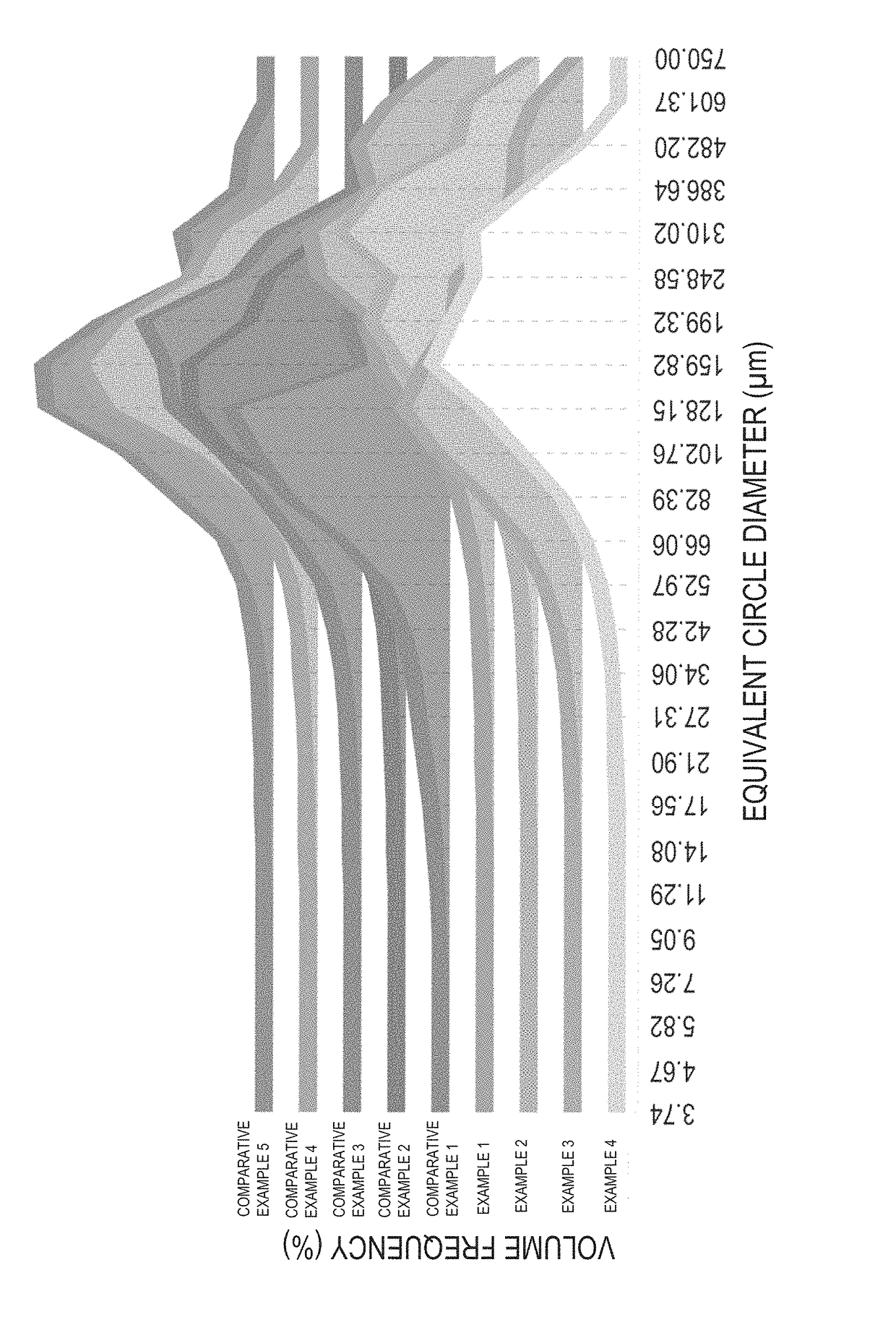Polysaccharide powder and anti-adhesive material containing the same
a polysaccharide and anti-adhesive technology, applied in the direction of dermatological disorders, drug compositions, surgery, etc., can solve the problems of surgical operations in surgery affecting biological tissues and damaged biological tissues, and achieve good water-solubility, poor water-soluble ability, good water-solubility
- Summary
- Abstract
- Description
- Claims
- Application Information
AI Technical Summary
Benefits of technology
Problems solved by technology
Method used
Image
Examples
synthesis example 1
Synthesis of Polysaccharide
[0114]In a 500 mL flask, 10 g of dextrin (Sandec SD #100, available from Meito Sangyo Co., Ltd., Mw=15 kDa) was dissolved in 62.5 g of pure water until no aggregation or cloudiness was found, and then 62.5 g of a 36 wt % NaOH aqueous solution was added and stirred at room temperature (25° C.) for 90 minutes. To the mixture, an aqueous solution of chloroacetic acid, which was prepared by addition of distilled water to 10.31 g (109.1 mmol) of chloroacetic acid up to 75 g, was added and reacted at 60° C. for 6 hours. After cooling to room temperature (25° C.), 80 mL of a 20% HCl aqueous solution was added to give a reaction solution containing CM dextrin. Next, to a 5 L beaker containing 4450 mL of ethanol and 180 mL of water, the entire volume of the reaction solution obtained above was poured with stirring. The precipitates were collected by filtration and washed first with 2 L of a 90% aqueous solution of ethanol and next with 2 L of ethanol. They were dri...
example 1
1. Solution Preparation Step
[0120]To a jacket of a 20 L stainless steel tank, cooling water (set to 1.0° C.) was supplied. To the, tank, 3,250 g of distilled water for injection was introduced and 300 g of trehalose was added thereto as a stabilizer. To this solution, 300 g of the NHS-linked CM dextrin obtained above in Synthesis Example 1 was added and stirred at 5.0° C. to 8.0° C. for about 1 hour to dissolve the NHS-linked CM dextrin in the solution. After dissolution, the solution was filtered using a pump and the filtrate was collected in a 20 L bag.
2. Freeze-drying Step
[0121]The filtrate collected in the 20 L bag in the Step 1 was dispensed in a volume of 2.5 L into trays for freeze drying (size: 44 cm×29 cm), and thereafter the filtrate was freeze-dried according to the program described below in Table 1 to give a freeze-dried polysaccharide. The following drying step was performed under reduced pressure of 1.7 to 5.1 Pa. In the following pre-freezing step, the shelf temperat...
example 2
[0126]A classified polysaccharide (polysaccharide powder (2)) was obtained by repeating Steps 1 to 4 in Example 1 except that an ultracentrifugal mill equipped with a screen having a screen size (diameter) of 10 mm (available from Retsch Inc., trade name: ultracentrifugal mill ZM200) was used instead in Example 1.
[0127]A vial (2) was obtained by repeating Step 5 in Example 1 except that the classified polysaccharide (polysaccharide powder (2)) was used instead in Example 1.
PUM
| Property | Measurement | Unit |
|---|---|---|
| particle size | aaaaa | aaaaa |
| particle size | aaaaa | aaaaa |
| particle size | aaaaa | aaaaa |
Abstract
Description
Claims
Application Information
 Login to View More
Login to View More - R&D
- Intellectual Property
- Life Sciences
- Materials
- Tech Scout
- Unparalleled Data Quality
- Higher Quality Content
- 60% Fewer Hallucinations
Browse by: Latest US Patents, China's latest patents, Technical Efficacy Thesaurus, Application Domain, Technology Topic, Popular Technical Reports.
© 2025 PatSnap. All rights reserved.Legal|Privacy policy|Modern Slavery Act Transparency Statement|Sitemap|About US| Contact US: help@patsnap.com



